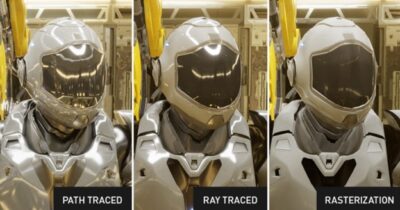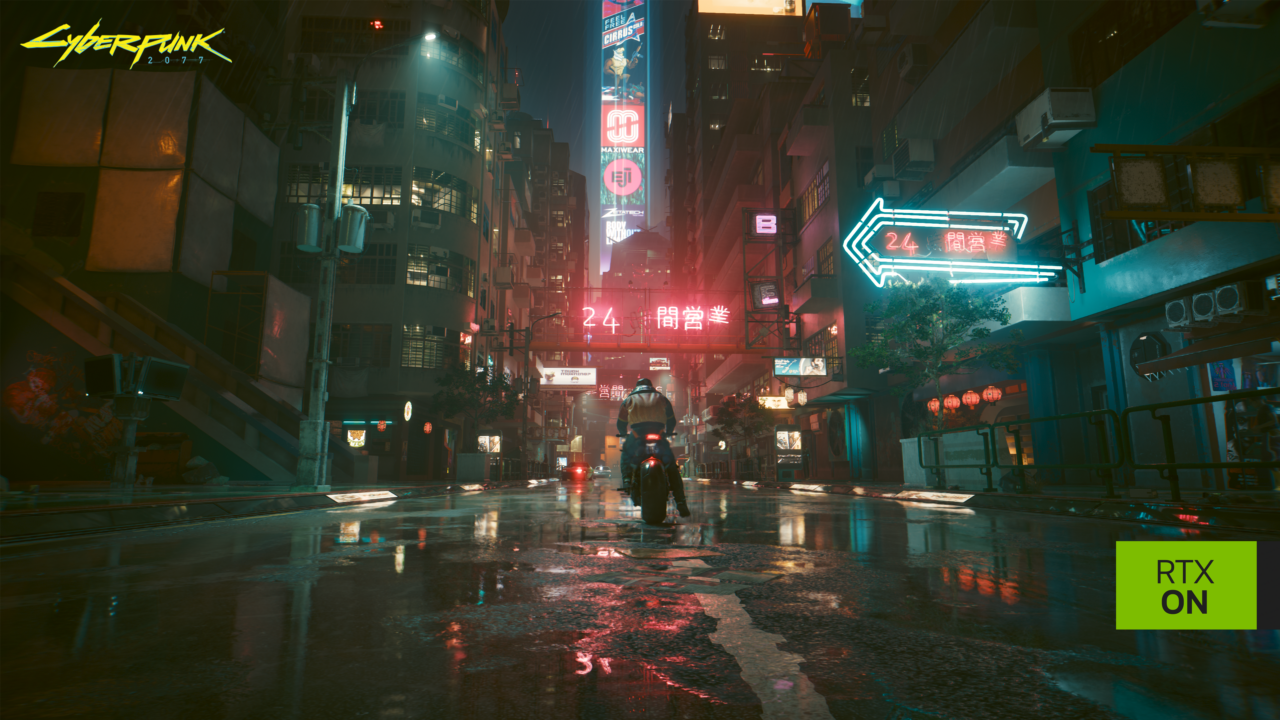Game developer CD PROJEKT RED today at the Game Developers Conference in San Francisco unveiled a technology preview for Cyberpunk 2077 with path tracing, coming April 11.
Path tracing, also known as full ray tracing, accurately simulates light throughout an entire scene. It’s used by visual effects artists to create film and TV graphics that are indistinguishable from reality. But until the arrival of GeForce RTX GPUs with RT Cores, and the AI-powered acceleration of NVIDIA DLSS, real-time video game path tracing was impossible because it is extremely GPU intensive.
“This not only gives better visuals to the players but also has the promise to revolutionize the entire pipeline of how games are being created,” said Pawel Kozlowski, a senior technology developer engineer at NVIDIA.
This technology preview, Cyberpunk 2077’s Ray Tracing: Overdrive Mode, is a sneak peek into the future of full ray tracing. With full ray tracing, now practically all light sources cast physically correct soft shadows. Natural colored lighting also bounces multiple times throughout Cyberpunk 2077’s world, creating more realistic indirect lighting and occlusion.
Cyberpunk 2077, previously an early adopter of ray tracing, becomes the latest modern blockbuster title to harness real-time path tracing. Coming shortly after path tracing for Minecraft, Portal and Quake II, it underscores a wave of adoption in motion.
Like with ray tracing, it’s expected many more will follow. And the influence on video games is just the start, as real-time path tracing holds promise for many design industries.
Decades of Research Uncorked
Decades in the making, real-time path tracing is indeed a big leap in gaming graphics.
While long used in computer-generated imagery for movies, path tracing there took place in offline rendering farms, often requiring hours to render a single frame.
In gaming, which requires fast frame rates, rendering needs to happen in about 0.016 seconds.
Since the 1970s, video games have relied on rasterization techniques (see below). More recently, in 2018, NVIDIA introduced RTX GPUs to support ray tracing. Path tracing is the final frontier for the most physically accurate lighting and shadows.

Path tracing has been one of the main lighting algorithms used in offline rendering farms and computer graphics in films for years. It wasn’t until GeForce RTX 40 series and DLSS 3 was available that it was possible to bring path tracing to real-time graphics.
Cyberpunk 2077 also taps into Shader Execution Reordering — available for use on the NVIDIA Ada Lovelace architecture generation — which optimizes GPU workloads, enabling more efficient path-traced lighting.
Accelerated by DLSS 3
DLSS 3 complements groundbreaking advancements in path tracing and harnesses modern AI — built on GPU-accelerated deep learning, a form of neural networking — as a powerful gaming performance multiplier. DLSS allows games to render 1/8th of the pixels, then uses AI and GeForce RTX Tensor Cores to reconstruct the rest, dramatically multiplying frame rates, while delivering crisp, high-quality images that rival native resolution.
Running on Ada Lovelace advances — launched with GeForce RTX 40 Series GPUs — DLSS 3 multiplies frame rates, maintaining image quality and responsiveness in games.
Powerful Tools Now Available
For game developers, NVIDIA today at GDC announced the availability of the RTX+ Path Tracing SDK 1.0. The package of technologies includes DLSS 3, Shader Execution Reordering (SER), RTX Direct Illumination (RTXDI) and NVIDIA Real-Time Denoisers (NRD).
Learn more about full RTX path tracing.
And catch up on all the breakthroughs in generative AI and the metaverse by joining us at GTC this week.
